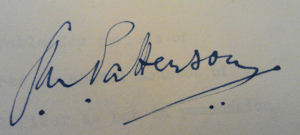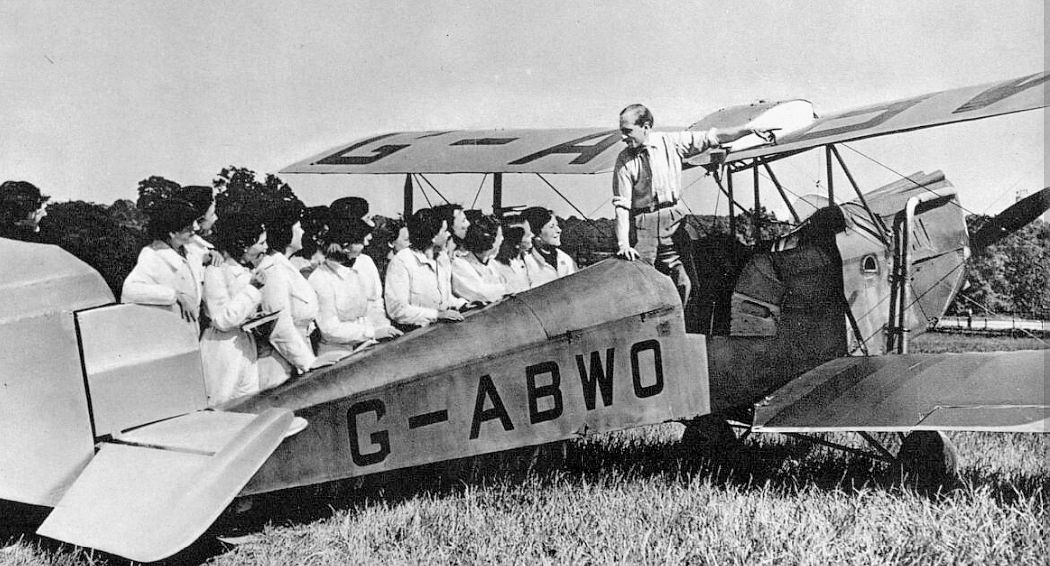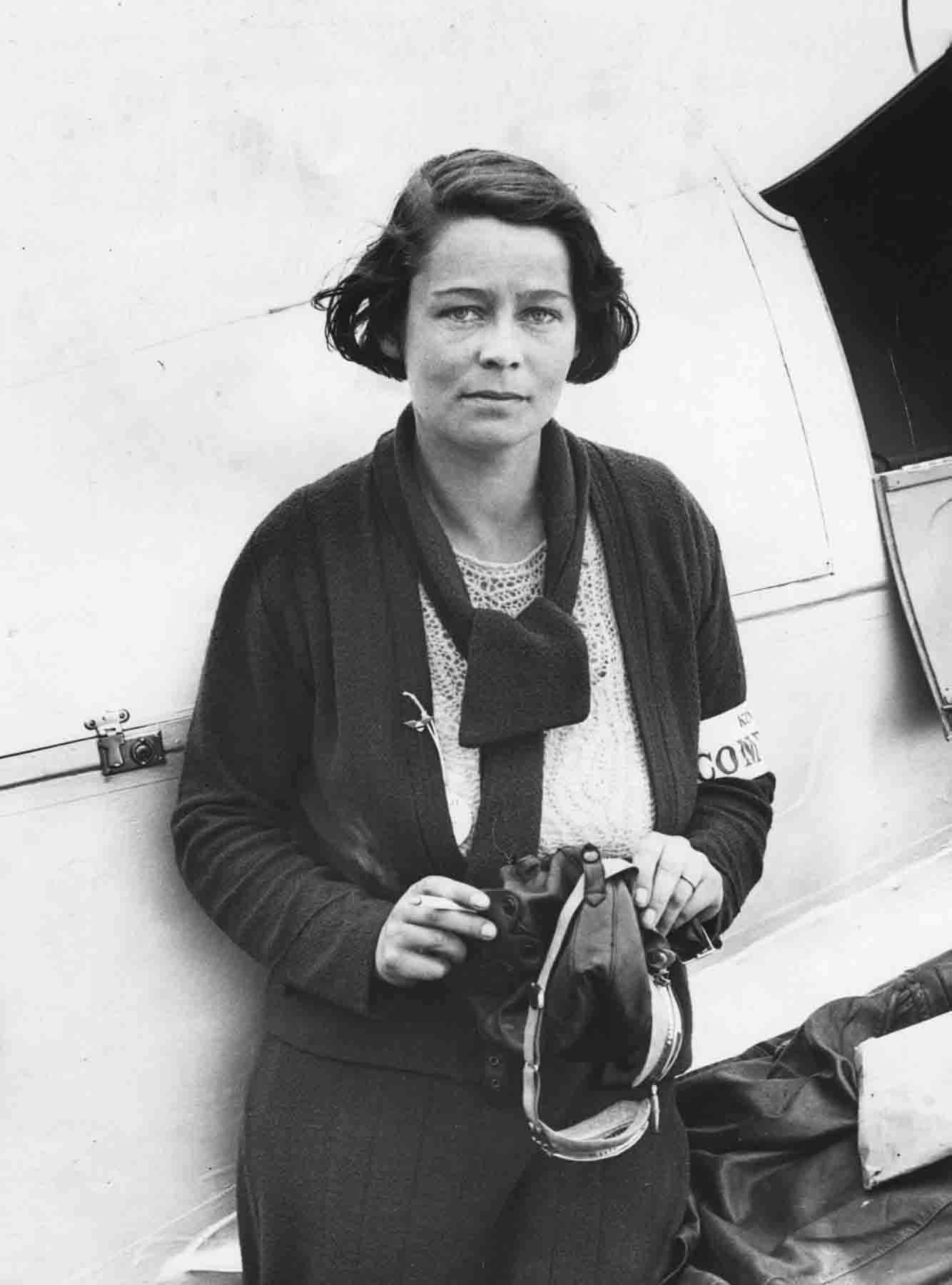Father: Malcolm Burr, a mining engineer, Mother: Clara Millicent [Goode] A lady with her own opinions, particularly about race handicapping, which you can read here. b. 6th July 1905 in Paddington, London, the eldest of four daughters; grew up in Dover, Kent, but her father was a rather peripatetic amateur entomologist and she was educated all over Europe, including Paris, Berlin, Budapest, and Vienna. Was very busy in 1931; described as a 'secretary' [actually, she was the Company Secretary of her mother's family firm of upmarket china and glassware merchants, Thos Goode & Sons], and living in Maida Vale, London, acquired both her aviator's 'A' Certificate (No 9752), and her husband, Mr Arthur L 'Pat' Patterson.
"Arthur Patterson, "Mrs Pat's " husband, and himself a distinguished aeronautical engineer, takes some of the weekly classes at Romford. Here he is giving instruction on rigging." The Bystander, 1939 [The 1932 Spartan 3-seater G-AWBO belonging to Romford Flying Club was damaged by fire in Feb 1940] At the same time (May 1931), she also competed in the Ladies event at Reading - the other competitors were Amy Johnson, Grace Aitken, Pauline Gower, Dorothy Spicer, Susan Slade, Winifred Spooner, Christina Young, and Fidelia Crossley - a historic gathering indeed.
Her son, Ian, was born in 1932 in Eton, Oxfordshire, but Gabrielle and Pat divorced in 1939. By 1933, she was the first woman (in Britain, at least) to hold an instructor's certificate. She entered the King's Cup Air Race in 1934, flying a Miles Hawk G-ACTZ designed by ‘Blossom’ Miles, wife of Fred Miles:
In 1938, she wrote an article on the subject 'Would women make good instructors in the event of war'. She, of course, was already a successful instructor, although admittedly her experience was limited, because "a man who is paying for his flying, and whose average age is probably a little greater on that account, is more amenable to reason than the youngster of eighteen to twenty, with his wild oats still unsown." She thought that women instructors would probably cope, though; "The instructor always starts with the advantage of his pupil's spontaneous respect for a (relative) master of his subject, coupled with a very natural wish to shine. The woman instructor has the added advantage that this respect is enhanced by her supposed greater difficulties in acquiring that (relative) mastery and with the instinctive desire of the male to impress the female. By tactfully and subtly indicating the conduct in the air and on the ground which does win her confidence and does impress her, she can obtain it in nine cases out of ten, and in the face of such a proportion she could certainly count on disciplinary measures for the tenth." But she worried whether there would actually be enough women to become instructors; her experience was that women didn't make such good puplis as men. "It is arguable that since of good men pilots only a few make good instructors, amongst women (where the number of good pilots is a lower percentage of pupils) the quantity of good instructors would be so small that there could be no justification for spending public funds in discovering them." The reason for this, she thought, was that "women pilots hitherto have consisted only of those with large enough bank balances". Flight reported her activities at the time: "19 May 1938: "ROMFORD. Miss Amy Johnson visited the Romford Flying Club last Sunday to present a flag and charter to the National Women's Air Reserve which operates there. There are 125 members of the Reserve, taking flying instruction with Mrs. G. M. Patterson." 15 June, 1939: "Mrs. G. Patterson's G.A.P.A.N. Appointment. All who have come into contact with her will wish to congratulate Mrs. Gabrielle Patterson on her appointment to the Panel of the Guild of Air Pilots and Navigators. This is the first time that a woman has received the appointment. Mrs. Patterson has been a flying instructor for some years and is now leader of the National Women's Air Reserve, the organisation which has been putting in a good deal of flying —and securing no little amount of newspaper publicity—at Maylands Aerodrome, Romford. Mrs. Patterson herself, it may be added, has always shunned any sort of personal publicity. She is, we believe, a first-rate pilot and an extremely capable instructor." She was living in Bristol, aged 34, with about 1,530 hours experience when WWII broke out in September 1939; her son was at Prep. School. She filled in the application form for the ATA that December; her 'types flown' at the time consisted of "Moth Major, Tigers, Avro Cadet, Avian, Cygnet, Hornet Moths, Cirrus I, II and III Moths, Gypsy Moths, Spartans, Puss and Leopard Moths, Klemm, Swallow, Civilian Coupe, Miles Hawk and Hawk Major, and Miles Whitney Straight" and she had owned "a Miles Whitney Straight, a Puss Moth, 2 Gypsy Moths, and 2 Swallows (Only 1 any good)". As well as in the UK, she had flown in Germany, Belgium, Holland and France. She gave her next of kin as Arthur Patterson RNVR. She started as one of the 'First Eight' highly-experienced women pilots at Hatfield the following month. After a while ferrying trainers at No 5 Ferry Pool, she had to learn to fly new types. Her instructors duly reported that she was "a good and very experienced pilot", and she was "keenly aware of her own limits , which I feel is an excellent feature of her character. Has the makings of a first-class ferry pilot."... "A polished pilot whose capabilities are limited by her physique. In view of her undoubted ability and experience I regard her as somewhat under-confident." She had 2 accidents; in December 1940, flying a Rapide X7322, (she was deemed to be 'at fault') and in May 1942, when the undercarriage of Spitfre Vc BP863 jammed in the 'up' position (she was 'not to blame'). During her time with the ATA, she flew these types: Moth (155 hrs); Miles Master (35 hrs); Oxford (105 hrs); Proctor (8 hrs); Hart (1 hr); Dominie (25 hrs); Magister (6 hrs); Harvard (8 hrs); Q.6 (1 hr); Lysander (6 hrs); DH86 (1 hr); Anson (42 hrs); Hurricane (26 hrs); Rapide (2 hrs); Spitfire (33 hrs); Blenheim (21 hrs); Douglas variants (1 hr); Defiant (1 hr); Fairchild (26 hrs); Hampden (3 hrs); Wellington (26 hrs); Hudson (6 hrs); Tutor (1 hr); Botha (3 hrs); Stinson (2 hrs); Whitley (1 hr); Beaufighter (2 hrs); Mosquito (2 hrs); Swordfish (4 hrs) and Typhoon (1 hr). However, her slight physique also let her down in other ways; she was off sick with measles for a month in Apr-May 1941, then 2 weeks in March 1942 with an infected elbow, then a month (Oct-Nov 1942), and finally (in Feb-Mar 1943) another month with 'bronchial cattarh'. Her contract was terminated in June and she left the ATA as a First Officer [which I always find surprising; she was never promoted to 'Flight Captain']. She died relatively young, sadly; having completed a degree at Manchester University in the 50s, she moved to France but fell ill with cancer, moved back to Little Missenden, Bucks, to live with her sister, but died there on 31st October 1968, aged 63. Her ashes were scattered from the air over White Waltham airfield in March 1969. |

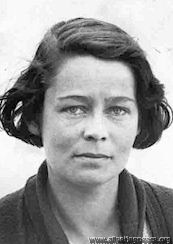 1934
1934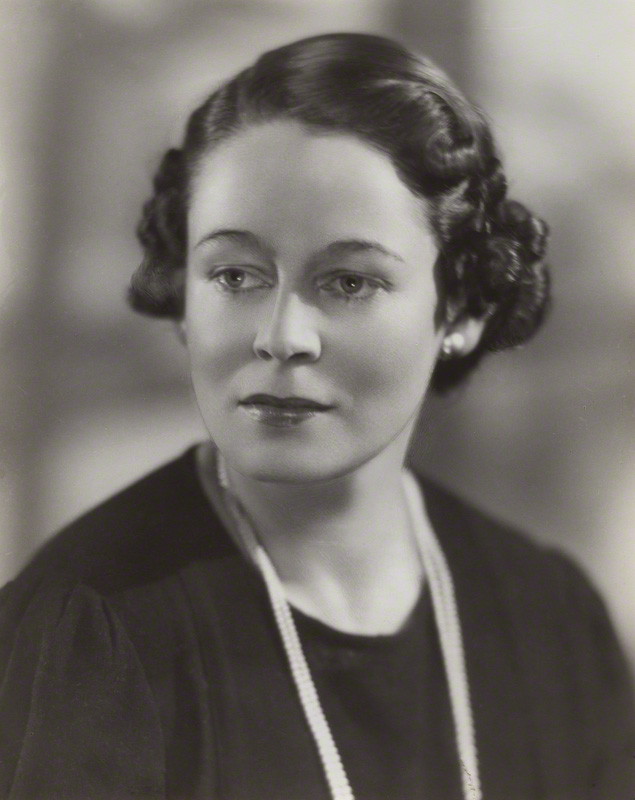 1938
1938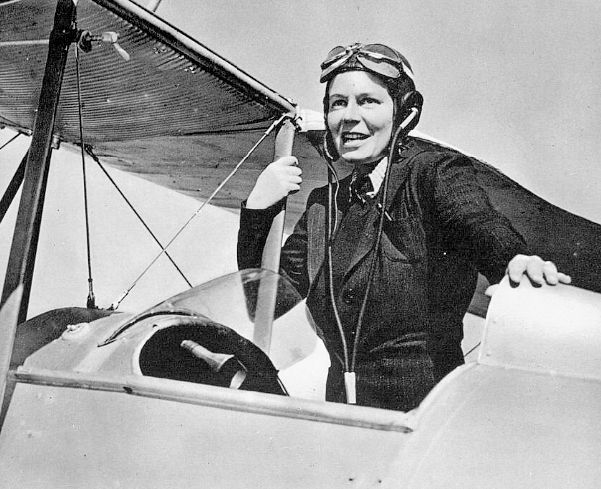 1939
1939.jpg) RAeC Cert 1931
RAeC Cert 1931